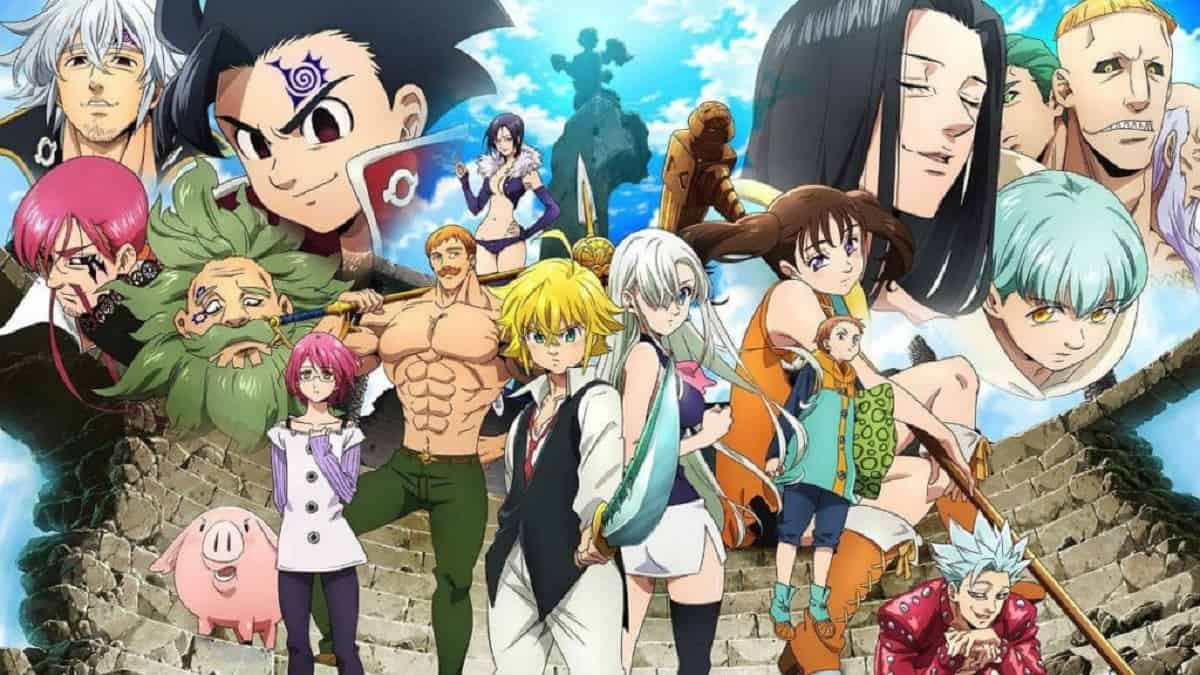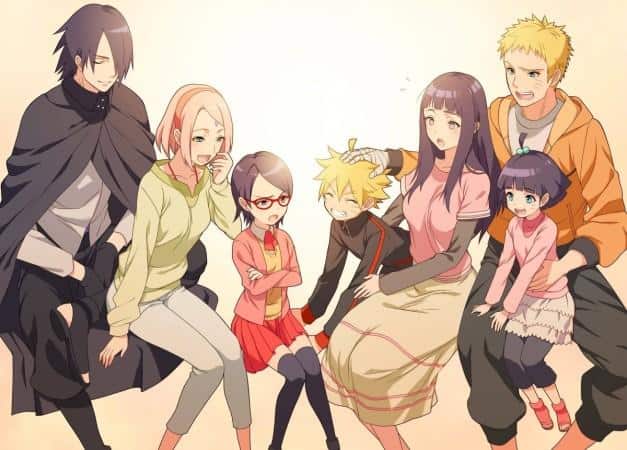Uncover the truth about Manga! Everything you need to know is right in front of you now!
What is manga?
Manga is composed of two characters: man 漫, which means whimsical, and ga 画, which means pictures. Manga is a broad term that refers to a wide range of comic books and graphic novels created and released in Japan. Mangaka is the maker of manga. Mangakas are both authors and illustrators, with each having its distinct style of manga. Japanese mangas are mostly published, in black and white, in contrast to Western comic books printed in full color. Full-color prints are usually reserved for special editions.
Japanese mangas are read right-to-left instead of left-to-right, the same is the case with most English-language works. If you’ve only ever read English publications, this may take a little more time to get used to, but once you’ve applied enough, you won’t notice.

Manga is released in Japan, chapter-by-chapter, on a monthly or weekly basis, in manga magazines such as Weekly Shōnen Jump. If a series becomes famous enough, the individual chapters are gathered and released into tankōbon volumes, which usually feature a few chapters from the entire story. When you begin a new series, you must remember to read the volumes in chronological order.
A large percentage of manga series are long-running, with numerous volumes.
What are the Basic Manga Genres?
- Kodomomuke Manga is a Japanese word that means “manga-oriented for children.” These publications are notable for moralistic tales that educate children on how to be decent and compassionate citizens. The chapters are often stand-alone and non-episodic to attract a youngster. One of the most famous examples of this manga genre is Doraemon by Fujiko F. Fujio.
- Shôjo Manga is intended for girls up to 18 and centers on romance, friendship, and comedy. Drawings are idealized, with emotions portrayed through huge, expressive eyes and symbols such as flowers. Although females are the primary target audience for shôjo manga, boys read Manga online. Shôjo manga can be made by both male and female artists. One of the famous examples is Ao Haru Ride (also known as Blue Spring Ride) is a worldwide success in both Japan and the United States, with a successful anime series based on the manga and a live-action film.
- Shônen Manga is primarily focused on males aged 10 to 18. Shônen tales are idealized and include action sequences representing adventure and sports, friendship, and overcoming adversity. Shônen manga has the highest popularity of any manga. Female audiences read its titles as well. The violent action sequences and intriguing plot lines that emerge over numerous installments contribute to the addictive nature of this media. As a consequence of its success, it has been widely translated into various languages and is among the most well-known manga in the United Kingdom. The best example of this is One Piece by Eiichiro Oda, the current shounen manga king has been nothing short of a behemoth. It is still ongoing, and as time pass by more people get hooked on this manga.
- Josei Manga is a type of manga intended for female readers between the ages 18 and 40. The art is less idealized than in shôjo manga, the narrative lines are much more mature than in manga for younger female readers, and the spotlight is on realistic romance, among other themes. A famous example of this is Kimi no Na Wa also known as Your Name by Makoto Shinkai. Your Name was adapted into a film that became a worldwide hit.
- Seinen means youth, however, Seinen Manga is focused on young adult male viewers. Seinen manga has action and violence that is far more serious also adult elements, including sexual interactions, graphic violence, or harsh language. Seinen series features characters who must confront reality in which the hero does not always come to the rescue. Seinen covers are frequently dark and grim, with masculine protagonists. A great starter for reading manga is under this One-Punch Man. It is a Japanese superhero franchise designed by the artist ONE.
- A Yonkoma Manga, also known as a 4-Koma, is a brief comic consisting of four panels placed vertically from start to end, typically using the Kishotenketsu story structure. They are found in newspapers, magazines, graphic novels, and other places, similar to Western comic strips. Yonkoma can be one-shot humor or a tale told across several comics. 4-Koma mangas are nothing less than a Rapid-Shoot Comedy since they deliver at least one joke every four frames.
- Gekiga Manga is a Japanese term for comic books that translates as “dramatic drawings.” It refers to adult-oriented comics with cinematic quality and more mature subjects. Lone Wolf and Cub, undoubtedly the most known and finest gekiga manga of all time, is a terrifying story set in Japan during the 1700s.
- Dōjinshi Manga is a non-professional self-published comic, and Dōjin refers to any self-published work. Dōjinshi manga has two categories: fan-comics and original works. Fan comics, like fan fiction, is inspired by well-known titles and are produced by supporters of such works. Original works are based on the original thoughts of the Dōjinshi-ka.
These genres are interconnected to how manga is advertised in Japan and pertain to specific populations. Putting manga into these divisions is a way of ‘dividing and conquering the market’ along conventionally accepted gender and age parameters. Boys buy Shōnen manga because it features male leads and tells male stories. Manga is for everyone, and one should not get too caught up with the titles of genres because it is an economic strategy rather than a set of rules to follow.
What’s the distinction between Manga and Anime?
Anime and Manga are two different forms of media.
If you enjoy using your imagination to bring a story to life or if you want to read the complete series without pausing, then Manga is best for you. Mangas are black-and-white graphic novels or comic books. They are distributed in chapters or volumes and serve as the foundation for many anime works.
If you like watching characters on screen and want to spend hours immersed in the graphics, images, or music, then Anime is the one for you. Anime is are animated version of manga source titles shown on television or in films. Their particular appearance or animation style is determined by the studio in charge of the animation. Popular anime titles are published in seasons; otherwise, a show will only last for one season, which will comprise 12 or 24 episodes.

What are the Pros and Cons of Manga?
Pros
- The characters are adorable, attractive, and good-looking.
- Manga art is distinctive.
- Most manga pays attention to its creative heritage, and it is a style that is uncommon in Westernized comics.
- The story is more than simply entertainment; it also contains the values of life advantages that you can choose.
- Manga is the most readily consumable media, and reading it may be done quickly. There is no imposed pacing in this series; you may read it week by week. You may read a chapter in a few minutes or take your time admiring each panel and all of the nuances.
Cons
- Not every manga is appropriate for children. Reading manga at nighttime may also be harmful to your eyes, yet most manga readers are too lazy to put on a light.
- Mangas occasionally vary from the main storyline, short, or teasers for future anime.
- There are numerous canceled series out there. Magazines will abandon projects quickly, allowing writers to finish them. Some stories, however, perform well within the timeframe they have and should not be evaluated purely on the finale.
- Sometimes one version of a character seems virtually identical to another, which can be confusing.
- Manga lacks color, with perhaps a few color pages at most.
In Conclusion.
No law says a mature man can’t read a shojo series or that a teen girl can’t read a seinen series. It all comes down to personal preference.
Many manga series crossover gender and age boundaries to be loved by all. There is also a manga that defies genre rules, like Kaiu Shirai’s Promised Neverland and Kiyohiko Azuma’s Yotsuba, both of which are shonen manga but contain female leads.
People sometimes think that all manga is for teenagers or kids, which can cause difficulties if a well-meaning educator, parent, or library accidentally provides a young kid with access to explicitly sexual manga designed for adults. Manga may range from serious, heart-wrenching drama to stupid, mindless entertainment like any other type of story. Exaggerated scenarios, comedy, or art are common in manga, as over-exaggeration is essentially a trademark of the genre.
Furthermore, if you’re seeking the greatest manga website, head to Mangago.to. It has a diverse range of genres. Mangago also has millions of pages that everyone might love and pass the time on. It is also the safest and most trusted website, so go check this out right now!